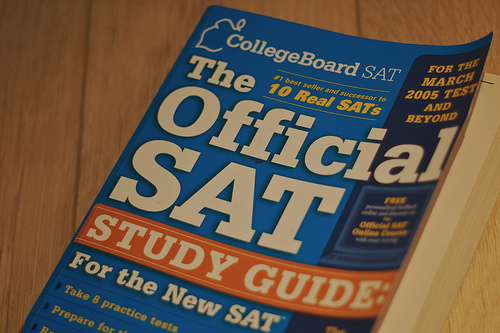
In a bold move to adapt to the digital age, College Board recently rolled out the first-ever online SAT, marking a significant change from the traditional paper-and-pencil format. The test, proctored on March 20, was met with a range of responses from students across the board. Here’s a glimpse into their thoughts on this groundbreaking change.
Junior Mihir Ayyagari sees the transition to the online format as a welcome change. “I like the online one because it has less reading, which used to be the worst part of the SAT in my opinion,” he said. For students like Ayyagari, who may struggle with lengthy reading passages, the online format offers an experience that caters to their strengths, including shorter texts and focus on quality over quantity.
However, not all students share Ayyagari’s enthusiasm. Junior Raimi Kvedys points out a significant drawback: increased difficulty. “It’s easier to monitor and it’s more organized, but the actual SAT itself is harder,” Kvedys said. His observation raises concerns about the potential for the online format to introduce challenges that may affect students’ performance, particularly in sections like math, which he found to be noticeably tougher.
Kvedy references the online math format because it closely mirrors the paper-based counterpart, but this time it has a major change: adaptive testing. With each question, the computer assesses both the accuracy of the response and the time taken, strategically tailoring upcoming questions to the student’s skill level. According to College Board, this new system ensures a more precise evaluation while offering an engaging and personalized testing experience.
Sophomore Shreyas Ganeshan feels he benefits from the new format. “It’s better since I can see my score quicker and it’s easier to move through the test. It’s easier for me to focus than on a scantron,” Ganeshan said. He highlights the convenience and efficiency offered by online testing, where instantaneous score reporting and a user-friendly technology help the overall testing experience.
The move toward online SAT administration brings advantages and disadvantages. On the positive side, it offers students like Ayyagari and Ganeshan a more tailored testing experience, with reduced reading burdens and accessibility to scores. Another positive is the decreased time for the test. The paper and pencil version has a three-hour duration time, whereas the digital SAT has only two hours and 14 minutes of test time. This change puts less strain on students and its easy format helps with smoother administration for test proctors.
However, issues such as increased test difficulty and the need for proctoring mechanisms to prevent cheating must be carefully addressed to ensure a fair testing environment for all students. Students need to complete the test on county-provided materials such as Chromebooks to prevent cheating.
Moreover, the digital divide remains a pressing concern. Not all students have equal access to reliable internet connections and devices, which could widen the existing inequality gap. College Board must take proactive measures to bridge these disparities and ensure that all students have equal opportunities to succeed on the SAT, regardless of their socioeconomic background.







